| Umělec magazine 2004/3 >> Get Along With What We Have | List of all editions. | ||||||||||||
|
|||||||||||||
Get Along With What We HaveUmělec magazine 2004/301.03.2004 Vít Havránek | interview | en cs |
|||||||||||||
|
Jiří Kovanda’s activities in the seventies became a significant pillar of Czech alternative culture. Recently, Kovanda has begun to be recognized abroad, particularly for his personal approach to urban public places; he has been presented at a number of international exhibitions in Europe.
The actions, however, are merely aspects of many stages. In the eighties he painted, drew and, in the nineties influenced Czech art with his small suspended objects from used pieces of furniture. This year Kovanda’s work was presented at at Domě Pánů z Kunštátu in Brno in an exhibition entitled I’m not against, for which he used material that he found in the gallery’s storage. Even though his work isn’t extensive, it confronts the entire local scene with his reflections on mundane situations with cheap and forgotten things, slightly shifted. He is interested in what is defined as low or private. Jiří Kovanda have worked intensively with Vít Havránek who was, together with Zbyňek Baladrán, curator of the Brno exhibition; Havránek was brought to the Transit organization to prepare Kovanda’s first representative publication. Let’s begin with your actions in the seventies. I would like to know whom you did them for. Who did you invite to your actions, and which public did you have in mind? Or who did you imagine? When you think about it, what was your imagined public, for whom you had unconsciously modeled? Looking back, I think I did them mainly for myself. These things are therapeutic in a strong way. It was most important for me to do something alone, for myself and by myself. As to the public that I invited, they were mostly friends who were interested in art at the time. And then there were publicly known people with whom I used to work. So it was really a close circle of acquaintances. As to the kind of public, I don’t recall that I would then have had some kind of impression. I had no preconception that there was some specific group. The public crystallized from the possibilities that were available at the time, but I hadn’t any particular ideal. So those who were there were the ultimate public for you. Some of your activities were done at home, and there was no audience whatsoever. But you considered that you’d document these for exhibition. Was this not that “ideal” public that came to your exhibition? Absolutely. A gallery public would have been ideal, but they weren’t there. If normal society functioned here in the Czech Republic, it would be presented in a gallery or in the press and people would get to know about it. It is true that that would be an ideal public. But because I have done so many activities alone, it is true that the documentation was supposed to be a communicating link. People who were active on the streets could appreciate this as art, as a dream, as an attempt to communicate. And it isn’t always possible to take in these activities as communication directly, but only when they have the label, “art,” or if it is “this and that.” It doesn’t work to be by and about itself. From these it seems that Kontakt—the action on the escalator—served to facilitate accidental encounters—attacks perhaps; but the results were intended for a group of people who encountered the documentation. How did you relate to those who became accidental participants in your activities? As I said, it was barely possible to accidentally participate without being informed. Even if a person on an escalator could realize what was happening and why he had an unpleasant feeling when some guy stared at him. It is possible that it happened, but I think that these were absolutely extraordinary. It must have been unpleasant and annoying. Despite that feeling of discomfort from my aggression, (it was an aggression, albeit not brutal, but a conscious transgression of certain borders) anything more could transpire. During your conversation with H. U. Obrist, he asked you about Utopia. You told him that you’ve never sought out Utopian dimensions. One can have Utopian ideas about society and then try to fulfill that. Why did you answer him so skeptically? I’ve honestly never really had ideas about some kind of improved social situation. I don’t want to say that I took from me to give to myself. If I said something very idealistically, it is that the improvement of the individual improves society as a whole. But that’s an overstatement. I didn’t want to mend the other, only myself. It was more important to deal with personal problems and feelings of individuals in society. The problem of the individual has taken priority over problems of greater society. I am asking because you tested specific social relations, ways of behavior and interpersonal relationships that have a stereotyped form. I wouldn’t even say that I tried to seek out something new, but rather that I wanted to learn how to get along with what I should be able to get along with. I didn’t feel in anyway limited or bound up in some kind of social convention or way that society functions. Rather, I felt that I have problems with things that I didn’t understand as something wrong. I felt that I should change myself, to be able to work within the possibilities available to me, to find normal human contact or normal behavior. If I am supposed to speak in any social level, I was sure that if I can improve my perception and I could present that, it might be of assistance to others. Let’s talk about the places where your actions took place. The ones held in public are now interpreted from a political point of view. You said that the political points weren’t of such an importance then, but yet for the regime of that time public space was typically under constant frenetic control. And you were disturbing that. I’ve spoken about this often; there was really no political interest. Yes, if you put it that way, there is such a meaning. But at that time public space was different. It was also a space of the mundane. Yes, we lived normal lives. I don’t think that as a consequence of the specific era I lived a life less worthy than what I would live in a more liberal society. Communication and relations among people, between men and women, personal problems—politics can’t really radically influence that. Well, unless your life is endangered. In this regard there were some conflicts, but not with me personally; at the Venice Biennale, Šembera and Mlčoch were ranked as political artists. They distanced themselves from this, and today some people blame them for cowardice. But I can understand them; I would have done the same. When was that? At the end of the seventies, I think we felt that politics was much shallower than what we were interested in, and that it shouldn’t be interpreted politically. This is a topical problem; the political at has many attitudes. And a problem of some political art is that it focuses political protest alone, and has no relation to the scenario of the mundane. Does this confirm the break between politics and daily life? I have still the same attitude towards political art which has politics as its main topic. Politics is simply a social function, and that is not enough for art. I don’t want to sound arrogant, but in art content and perception are important. I don’t say that art should exclude political questions because these are present everywhere in some way. But it is not enough as a singular content—there are more important and deeper problems than simple functioning. I liked your sentence, “get along with what we have.” You used this for an exhibition we did together in the House of the Lords of Kunštát in Brno. You used elements that were at your disposal. You didn’t want to buy any material and instead systematically worked with what was in a storeroom. Why is that important for you? Is there in this an aspect of ecology for the artist or is there an opposition towards design and commercial production? Is it deeper? It is true that although I did many things, this is the only main line among all the things that differs at first sight. It has a more general level. I think that a person has everything he needs at his disposal. I don’t just mean art. The problem is how to handle this. It is not about changing external things, but about changing yourself from the inside where the are the causes of why we feel bad. We have everything at hand that we need to feel well, but we cannot handle it. We can see that in many of your objects that use the principle of the ready made—you just alter them slightly. It is important that they are easily accessible, cheap, trivial and often mockable. It’s easy to get such things for everyone. They are worked in a non−cunning way that anyone can manage. Just because something is done in a complicated way doesn’t mean that it automatically has quality. The quality that should be here is the same in everything, whether you use marble or a crumpled tin. From the outside you seem to change your formal statements quite a lot. You radically ended up with actions and began to paint. How do you rationalize such breaks? Is it that you are impulsive? This doesn’t come out of my inner impulses; the reasons are more external. I always focus on being more communicative, on the language that will help me express what can be expressed. The means are initiated from the outside. In my interview for Výtvarné umění magazine I once said I “change like a weathercock,” which is basically negative. But I wanted to show that it’s bad only in certain circumstances; it doesn’t always have to be so. Speaking the most understandable language doesn’t have to be wrong, once what you are saying is worth saying. That’s how you get to what we wanted to solve in Brno, when we were doing a survey of your favorite authors. I think it is important that you are self-taught. This gives you a certain freedom of orientation. People like Knížák, Boudník or Kolář have achieved a great liberty of movement and choice in both form and content, and they didn’t take the medium as a fixation and didn’t stagnate. Could you recapitulate your development? In an interview with Jiří David you said that you were influenced by Surrealism, which is an important stream in Czech art, and people have to deal with that. Could you tell us something about your history? I can’t say whether it is because I am self-taught, but I have never considered myself a painter, an author of objects or collages, or a conceptual artist. I have always felt like someone who deals with those things. I don’t know whether they are pictures in the right sense of the word—probably not. I have always handled objects as things I have found. And the development Surrealism is a very attractive style for a beginner, although even this is just imaginary, because accessibility is only superficial. But this is important for local conditions. Then I came quickly to conceptual art, minimalism and abstraction. Because even in the surrealistic picture it is not important how it is painted, so it is a good training for conceptualism. When we were in New York I noticed that you seem to pay attention to things that have nothing to do with your work. That interests me. Who do you mean? Well, for example, Dana Schutzová. If something isn’t connected to what I do, I don’t mind anything that disturbs an everyday stereotype, or is “refreshing.” It’s the same in my work, once I feel that I get into a position where I’m managing the thing that I can do repeatedly without problems; when it stops being interesting, I quit. It has always been important to me to discover things, to see something I hadn’t noticed before. You have long been teaching at the Academy of Arts. You haven’t been through such a school and now you can observe people spending their time there; you help to create methods that educate them. In your opinion, what’s the use of a school for artists? My decision not to study was adolescent and romantic; I didn’t have any clear attitude at that time. And what is the sense of art schools? And what should be changed in them? I don’t think they need a change. People are free to communicate, speak about their experiences and react mutually, and quicken their progress, so that you don’t have to discover everything yourself and go through it. That’s what I consider important. Do you have some idea what the art should bring to society? Maybe it is a stronger perception of things. Open what can be opened. See what can be seen and therewith change the perception. Art is not much more than what we can see in a common, everyday life. It’s just somehow chewed or processed and the path is slightly swept before them. When you look back to the 1980s, what do you think? Today they seem very colorless and blank? For me, the eighties were important because back then the borders between what had value and what had no value were torn down. What had been on a pedestal was cast to the ground; that which had been trodden to ashes as unimportant was highlighted again. I even sensed a critical tone that was strong among some Americans; I doubt that the critical tone was dominant for them. Maybe it is explained like that, but it was much softer and intentionally with an unclear tone. For me it was important to understand things in a way that doesn’t allow dividing what is important from what isn’t. Suppose you were to say just one single person? That’s a problem. I have never had just one person or just one thing; it keeps changing. But if I had to mention names, then at some periods there are people like David Salle or Kenny Sharf—Americans rather than Europeans. Is it their radicalism and lesser esthetic experience and cultivation? Rawness? It could be that things we understand as advantages of Europe and its history are holding us back. You mean that people can look at Baroque churches and travel through a cultural landscape from childhood while America looks mostly prehistoric. What are you working on now? Now? I haven’t been doing anything for a few years. It’s out of personal uncertainty and skepticism. And my ambitions weaken with age. I am trying to make a series of drawings but it’d take time and it is not clear for me. What kind of skepticism do you mean—something personal against yourself, or against the method of communication that is art, and some system? Skepticism might be a strong word—a doubt whether the things I speak about are just an illusion. Maybe it was possible one day, but it won’t be anymore. The atmosphere is changing along with attitudes. Although many people are still interested in art, I don’t know how important it is for other people; but I have always worked with art simply to impress myself. To yourself? To myself. When I can’t manage this, I can’t do this or don’t handle that, then I do it in this way. Especially during my actions, that was an impulse and a reason to perceive myself more meaningfully. You don’t feel the need anymore? I am not sure whether it is necessary to substitute it with something. Maybe I am a bit more resigned. It seems to me that you tend to read Zen. I haven’t read that for a long time; in the seventies and in early eighties, it was a trend in the society that I lived in. You mean Štembera, Mlčoch and Karel Miler. Karel Miler a lot. Štembera was doing yoga or Aikido or something... Certainly it is obvious that it was useful at that time. But I don’t want to look like some wise man, knowing something and lecturing. I only want to say that this and that might have been that way and it would be worth proving. I still hope that art can assist not just those who do it but also those who encounter it. The artist is never “ready.” But he is someone who is trying it. Not that he got to know something and now is just communicating it.
01.03.2004
Recommended articles
|
|||||||||||||
|
04.02.2020 10:17
Letošní 50. ročník Art Basel přilákal celkem 93 000 návštěvníků a sběratelů z 80 zemí světa. 290 prémiových galerií představilo umělecká díla od počátku 20. století až po současnost. Hlavní sektor přehlídky, tradičně v prvním patře výstavního prostoru, představil 232 předních galerií z celého světa nabízející umění nejvyšší kvality. Veletrh ukázal vzestupný trend prodeje prostřednictvím galerií jak soukromým sbírkám, tak i institucím. Kromě hlavního veletrhu stály za návštěvu i ty přidružené: Volta, Liste a Photo Basel, k tomu doprovodné programy a výstavy v místních institucích, které kvalitou daleko přesahují hranice města tj. Kunsthalle Basel, Kunstmuseum, Tinguely muzeum nebo Fondation Beyeler.
|


























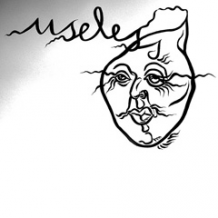






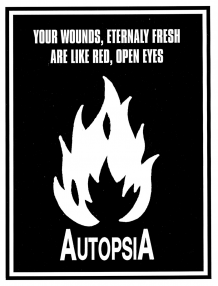





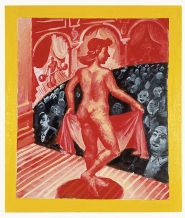
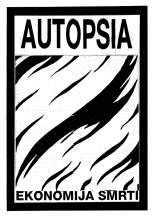
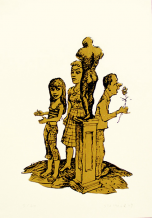


 We Are Rising National Gallery For You! Go to Kyjov by Krásná Lípa no.37.
We Are Rising National Gallery For You! Go to Kyjov by Krásná Lípa no.37.
Comments
There are currently no comments.Add new comment